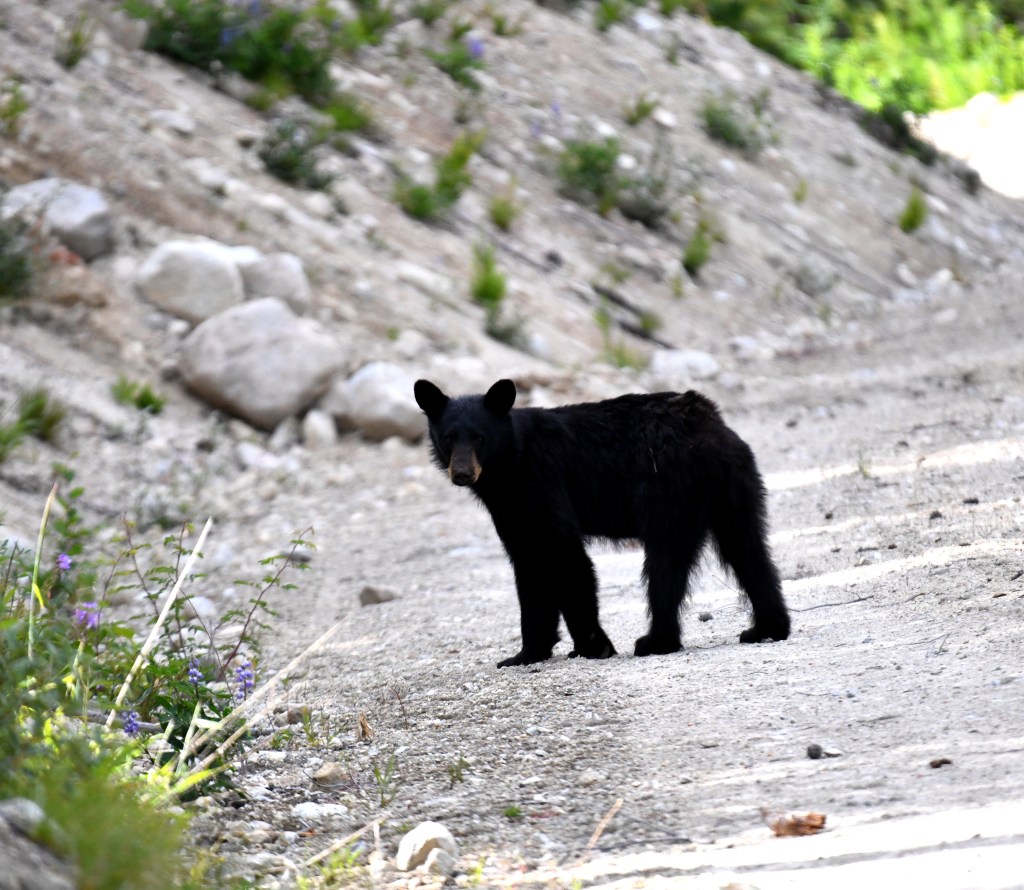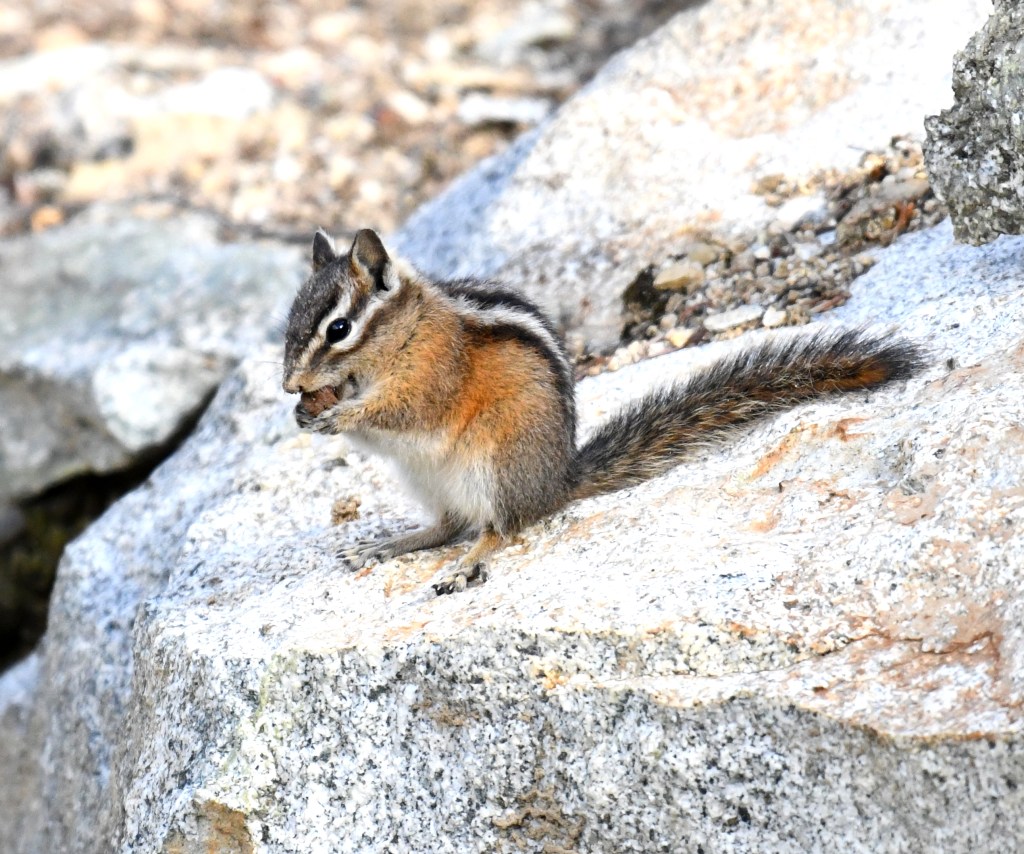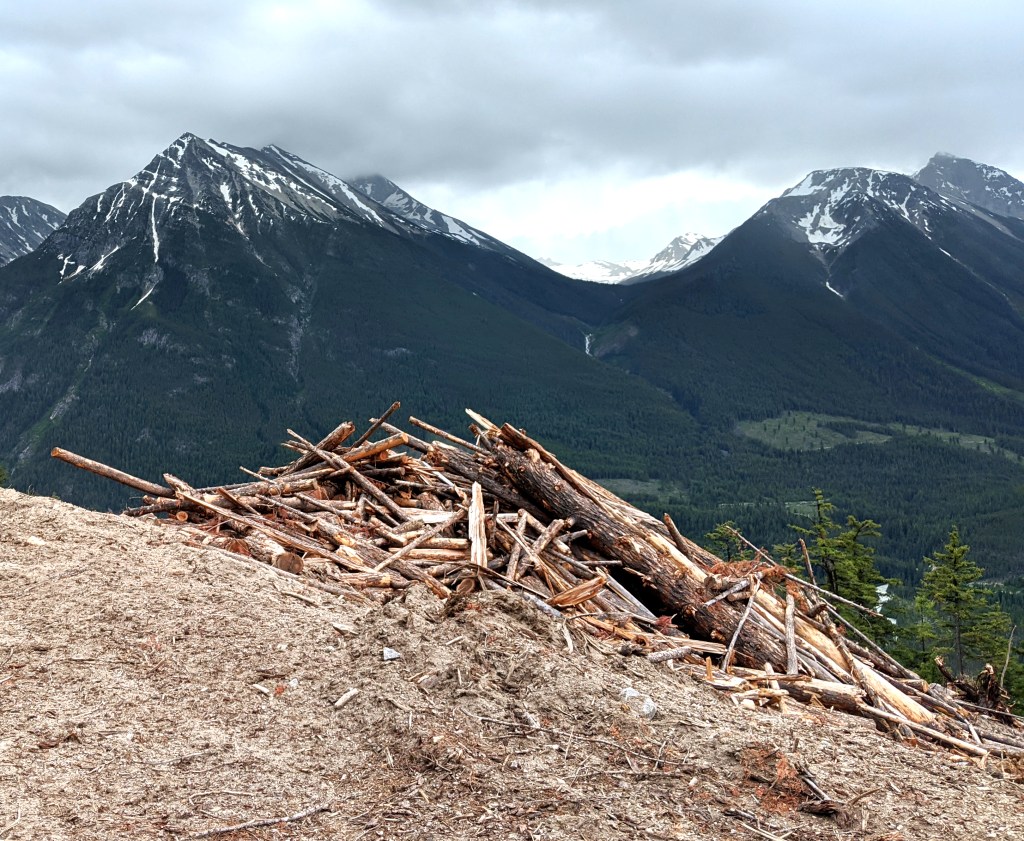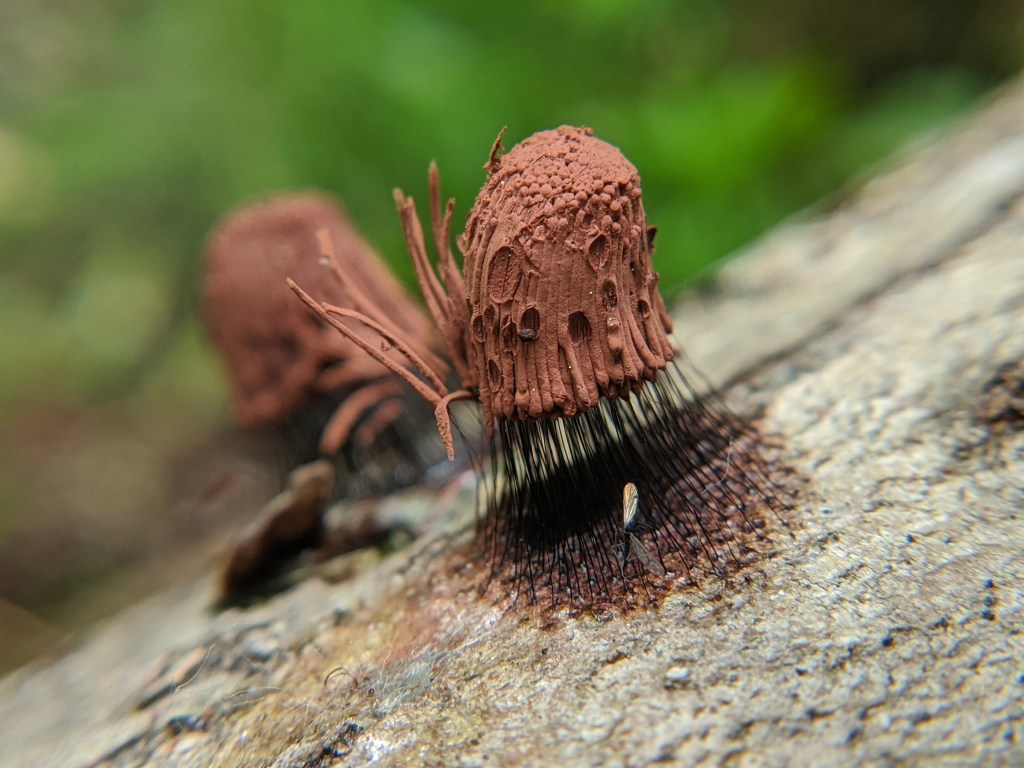Bridge River Delta Provincial Park iNaturalist Project
This summer Trevor and I collaborated with a UVic researcher who was coordinating for a BC Parks Project. The goal of our involvement in the project was to bioblitz our way in some remote provincial parks. A bioblitz is when you document all the different nature you observe. By documenting through iNat we recorded disjunct plants, rare insects, and contributed multiple first observations for iNaturalist and ebird.

A screenshot of the iNat Project for Bridge River Delta PP
The first park we bioblitzed our way around was Bridge River Delta Provincial Park (pic above), which is located at the west end of Downton Lake, outside the small town of Gold Bridge, British Columbia. Which makes this park about 65 km beyond Pemberton, from Lillooet it’s about 80 km, and a 30 ish km drive from Gold Bridge. So, it’s a journey to get to, but doable for long day trip. The Bridge River Forest Service Road will get you there, so long as you’ve got a capable vehicle, and the gate along the way isn’t closed. We went June 27th, 2020 and only had to dodge a few rock falls, and two black bears until we hit a real roadblock.

American Black Bear (Ursus americanus) 
Yellow-pine Chipmunk (neotamias amoenus)
The park spans both sides of the Bridge River, with its majority on the northern side of the river. But to reach this part of the park navigating fresh logging roads is required and took some trial and error. Once we got on the correct road and almost reached a spot to park and start the bushwacking, we came upon a recent rock fall that left a smattering of boulders across our path. GAH! FARTS! DANG IT!
Well time to start pushing rocks! Yahooo. It was going to be a squeeze but we could see a potential path for our Subaru Forester after moving some big boys.
SMACK! There goes my fingers. It wasn’t long before the first blood was shed. As Trevor used a large stick as a lever and I was pulling on a large rock, my fingers and the stick connected. OWWWW! Thankfully my pinky took the brunt of it, and no broken bones, thank goodness! Umm what a bunch of dumb dumbs we were.

I’ll spare you the real nasty photos, and just show this one where my pinky tip is sill hanging on. 
We believe the most recently logging took place within the last year 
This was the tight spot. I didn’t get any photos in the morning, this is a shot on the way out.
With the rest of the rocks cleared we creeped through and reached a spot near the boundary of the park. Climbing over the recent logging was really depressing. Everyone should visit a recently logged site to witness the destruction and waste. Depressing. By living in Pemberton for the summer logging sometimes felt like it’s all around, everywhere you look. I wish people here in the Bay Area could observe these scenes too and maybe then people would be less wasteful with paper products. These experiences have propelled me to find more sustainable alternatives to products like toilet paper. Bamboo tp is fantastic, go wipe your butt with it, please.
Onto the lakes! Within the park are a couple swampy areas as well as a lake. As we were on the hunt for all types of plants, exploring these areas would support different species of flora and fauna than what the surrounding forest supports.

Wolf’s Milk (Lycogala epidendrum) 
Honeycomb Coral Slime Mold (Ceratiomyxa fruticulosa) 
Chocolate Tube Slimes (Genus Stemonitis) 
This is the largest swampy area we visited. The mountain in the back is on the south side of the river.
Surrounding the swamp’s edge was a great moose trail with lots of decomposing logs that fungi and slime molds were growing and thriving on. Pictured above are three genera of slime molds I found, which all belong to the Kingdom Protozoan, not in the Fungi kingdom to which mushrooms are taxonomically placed. Wolf’s milk when in its immature fruiting body stage like above, is like a pimple waiting to be popped. It’s near impossible for me to NOT pop one of its irresistibly squishy blobs. All three grow on rotting woody material, and some have an affinity for larger stumps or logs. But unlike the other two Chocolate Tube Slime elevates itself off the substrate by its skinny little stalks. It also goes by the common name Tree hair and Pipe Cleaner Slime. The tiny chocolate sausages is called the sporangia which produces the spores. Ah, just love her.
At times the bushwacking was easy peasy, following deer and moose trails under the large Douglas Firs and Cottonwoods. Until we came upon a section of lodgepole pines. AHH! Gosh darn it climbing up and over as well as underneath an section of windfall of these pines was torturous at times. Making 10 feet of ground could take minutes. Lots of audible GAHH, ARGGG, F^#%s were expressed, not just to supplement our “hey bears,” but as a form of mental pain management.
Did I mention this park has no trails? Ooops. Yup. #BushwackingLife
The only evidence of humans we found was a stash of old cans, what appeared to be a trash pile from yeeeears ago. Before we reached the little lake we came upon a pile of rusted tin and open areas that were perhaps a former camp site? Who knows! If anyone knows more of the history please let me know!

Western Spotted Coralroot (Corallorhiza maculata var. occidentalis) 
Norwegian Mugwort (Artemisia norvegica) 
Western Spotted Coralroot (Corallorhiza maculata var. occidentalis) 
Lewis’ Monkeyflower (Erythranthe lewisii)
As this trip was at the end of June, the wildflowers were in great shape. Pictured above are a few. Lewis’ Monkeyflower is one of my favorites, which we observed along a small creek on the way out, oooo that color is just scrumptious! Named for Meriwether Lewis who documented many species, but through different tragedies lost many of the specimens. This is one of those species.
The top two most left and right are both Western Spotted Coralroots. The Genus Corallorhiza can be broken down into the Greek word korallion, meaning “coral,” and rhiza meaning “root.” Coral root! I love a descriptive name because indeed the rhizomes of this genus actually look like coral with its many branches.
You might have thought at some point, why the dickens would you want to go to such an inhospitable place? Well there are many reasons. We were planning on visiting this park before approached about the BC parks project, only six days earlier. It’s a place Trevor grew up near, and knowing what’s at the end of the road or the end of any old valley is in the Van Loon genes I swear. Combined with our interest in going to remote/unusual places to document nature made this a perfect first place to explore. You never know what can be found where humans don’t frequent! Even more popular parks have spots or habitats that need documenting, so you don’t have to travel to places like this to find new and interesting nature.
Once at the lake we realized a beaver had been busy over the years and natural dam had been created along the edge we entered on. We could walk on this semi floating, semi-stable wall. I followed a small animal trail along the waters edge which led me to the architectural mastermind. But Mr. Beaver was dead! Freshly dead! In the middle of his trail going from the lake to the outflowing stream he was laying right there, his trail was his deathbed. Tragic! Maggots and flies were abundant on his belly. What caused such an oddly timed death still evades me. Rest in peace bro.

Trevor photographing ducks and bugs. 
The lake. Looking east. BC in the summer means lots of bugs. One photobombed this lake view. 
RIP Mr American Beaver (Castor canadensis) 
Narrow-headed Marsh Fly (Helophilus fasciatus)
At the lake we found many great species, especially insects. Special shoutout to the weevils. I love an evil weevil. They aren’t evil in any way, evil weevil just is fun to say. Try it yourself. Right now. I’ll wait.

Weevill: Lixus caudifer 
Weevil: Lixus rubellus
The two weevils pictured above are in the Genus Lixus within the family Curculionidae, which are commonly known as “snout and bark beetles”, or “true weevils.” They have distinctly long snouts and antennae with tiny clubs at the end which make them easily recognizable. They feed on plants, with many having a preference for only a few plant species. Lixus caudifer was a iNat first, L. rubellus has only seven observations.
We documented a plethora of insects species, here’s a few more.

Click Beetle: Genus Corymbitodes 
Typical Leafhopper: Subfamily Eurymelinae 
Genus Chrysops
Oooo dem eyeballs! Genus Chrysops is also known as Deer flies. And yes, they do bite as they are bloodsucking insects. They create a slice in the skin of their unlucky prey using specialized mouthparts and then lap up the pool of blood that forms. Ouchie!

Belted Whiteface (Leucorrhinia proxima) 
Whitefaces (Genus Leucorrhinia) 
American Emerald (Cordulia shurtleffii)
So on the return trip to the car we took a slightly different route but still included grunting (aka cursing) over a sections of fallen lodgepoles, but we prioritized easier walking for our sanity.
After more clambering over a clear cut, which is exhausting, we exited the park in a slightly different spot and had to walk a ways on a logging road to our car. My wonderful hubby Trevor decided to jog to the car while I kept our stuff and looked for bugs on the roadside. We each made sure to have a bear spray, and I blasted whatever songs I had on my phone to let any bears aware of my existence. What were those tunes? I can’t quite remember besides that they were definitely country. Perhaps Alan Jackson or Keith Urban? Hope the birds and bugs enjoyed the tunes.
Okay back on the road again, was going fine until we approach the rock fall again. Should be fine right? We already conquered this obstacle once before? Well after multiple attempts at different angles and lots of yelling it wasn’t working. I was not about to risk puncturing a tire with 30 plus kms back to a town with a population of 43. So after some more rock pushing and shoving (no blood this time thankfully) we somehow fit through! Halle freakin lujah!

After squeezing through the boulders we celebrated and de-stressed by exploring a small creek. You can see the logging on the south side of the Bridge River and the FS road.
Our main goal was completed, documenting the north side of the river, but we still wanted to check out the southern side and the sand bars for plants. But to reach the river and whatever grew along its edge, a wall of alder stood in our way. When I say wall, I truly mean a WALL. A thick thick wall. As soon as Trevor got a foot into this fortress he was gone, couldn’t be seen. It was truly incredible, and hilarious.
If you want to see videos of bushwhacking, the car squeeze, and a view of the lake check out the videos here.
Ah the glorious feeling of making it home safe is truly uplifting. Normally we are the ones to blabber on about the trips highlights, but this time the rest of the family had explored the general area that day also. So once we were back to safety it was great fun to compare notes and hear what they saw down the logging roads we didn’t investigate. We could then refer to paper maps (yes they still exist) where we went and connect past and future adventures to the Upper Bridge River area.
Having read this day’s adventure would you go to this provincial park, or stick to one with trails? While this is a very special place there are many other corners of BC I want to explore before returning to this challenging-to-maneuver watershed.
Over time I will be revisiting these bio-blitzing trips in BC, so stay tuned for adventures in the Chilcotins and other backpacking trips in grizzly country.
Resources:
- Bridge River Delta Provincial Park Wiki Page
- iNaturalist Bridge River Delta PP project page
- Horse Flies and Deer Flies, Entomology at University of Kentucky
- Wolf’s Milk iNat/Wiki Page
- Stemonitis spp. from The Oakes Museum of Natural History
- Lewis’s Monkeyflower Plant of the Week U.S. Forest Service
- Coralroot Orchids by U.S. Forest Service

I’m a total iNat addict! I’ll have to find and follow your and Trevor’s posts. William
LikeLiked by 1 person
Totally! We LOVE iNat, our handle is chloe_and_trevor
LikeLiked by 2 people
Found it! Some great shots there (I love the otter commandeering the kayak!). Hope to learn more western species by following your iNat posts and blog. William
LikeLiked by 1 person
Awesome! Ya that’s a real fun one!
LikeLiked by 1 person